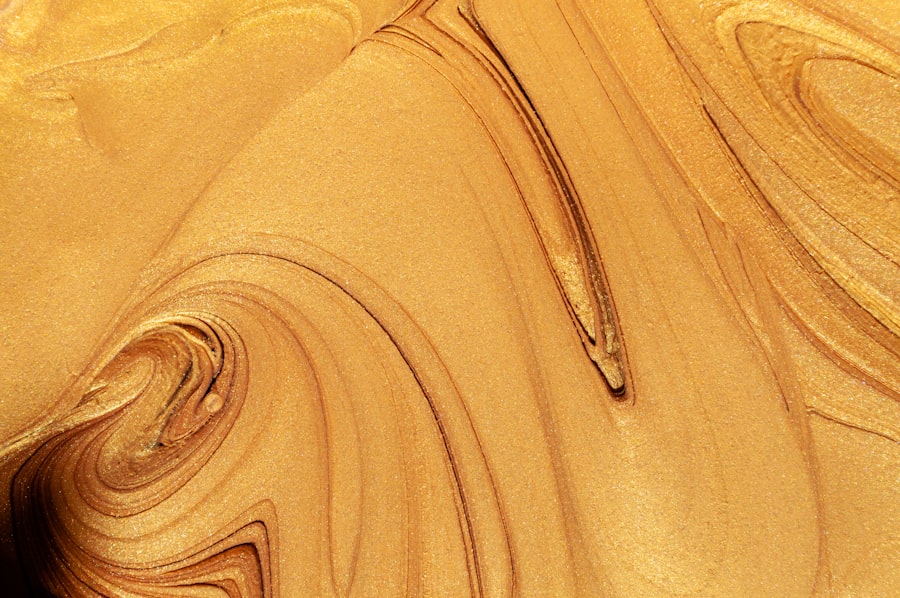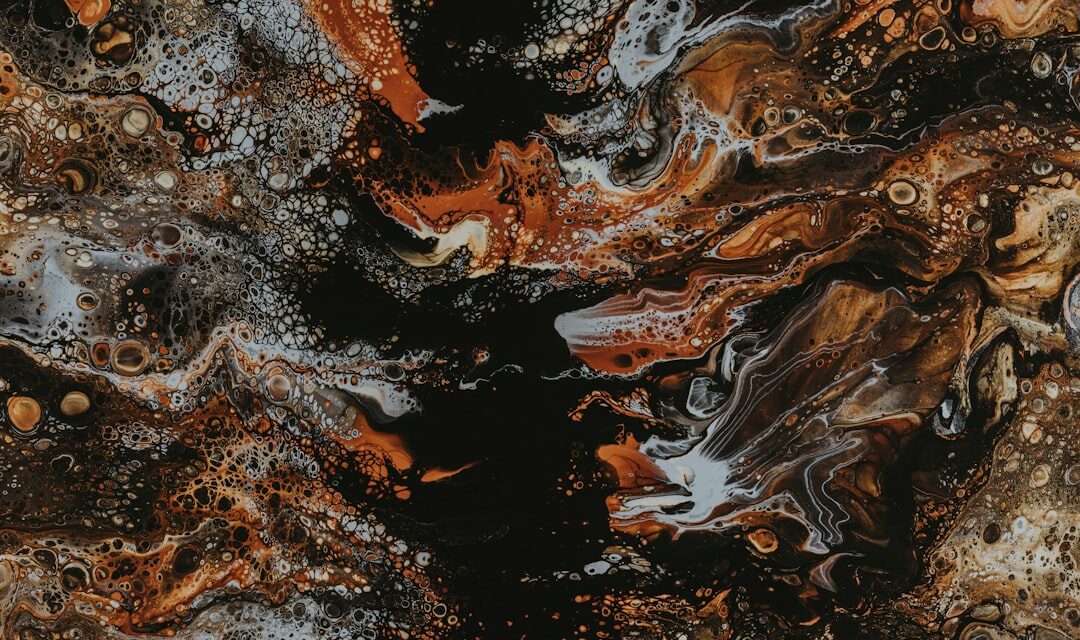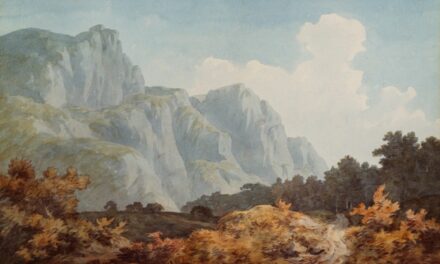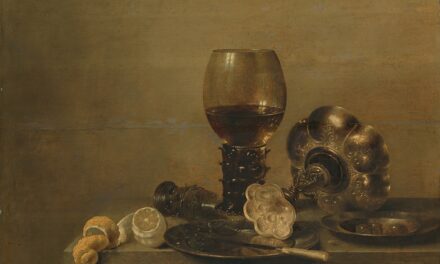Grisaille, a term derived from the French word “gris,” meaning grey, refers to a painting technique that employs shades of grey or monochromatic tones to create the illusion of three-dimensionality. This method has its roots in the medieval period, where it was predominantly used in the creation of stained glass windows and frescoes. Artists sought to replicate the appearance of sculpture through painting, and grisaille provided a means to achieve this effect without the use of colour.
The technique flourished during the Gothic era, particularly in the 12th and 13th centuries, as artists began to explore the interplay of light and shadow in their works. As the Renaissance emerged, grisaille evolved further, becoming a popular choice for artists who wished to convey depth and realism. The technique was often employed as an underpainting, serving as a foundation for subsequent layers of colour.
This practice allowed artists to establish a strong tonal framework before introducing hues, enhancing the overall composition. Notable examples from this period include the works of Jan van Eyck and Rogier van der Weyden, who utilised grisaille to create intricate details and lifelike figures. By the 17th century, grisaille had become a staple in the repertoire of many European painters, with its application extending beyond religious themes to include secular subjects.
Summary
- Grisaille originated in the Middle Ages as a technique for imitating sculpture and evolved into a popular method for creating monochromatic paintings.
- Grisaille is executed by using a limited palette of grey tones to create a sense of depth and form, often starting with a monochromatic underpainting before adding layers of transparent glazes.
- Value, or the range of lightness and darkness in a painting, is crucial in grisaille as it helps to create the illusion of three-dimensional form and volume.
- Famous artists such as Rembrandt and Jean-Auguste-Dominique Ingres have created stunning grisaille works, showcasing the technique’s ability to convey emotion and drama.
- Grisaille is a versatile technique that can be applied to various subjects, from portraits to landscapes, allowing artists to explore different textures and effects.
Understanding the Technique: How Grisaille is Executed
Executing a grisaille painting involves a meticulous process that requires both skill and patience. The artist typically begins with a monochromatic underpainting, using a limited palette primarily composed of blacks, whites, and greys. This initial layer serves as the foundation upon which the entire composition is built.
The artist must carefully consider the placement of light and shadow, as these elements are crucial in creating the illusion of depth. By employing techniques such as glazing and scumbling, artists can manipulate the surface texture and luminosity of their work. Once the underpainting is complete, artists may choose to add colour in a technique known as “grisaille à l’ancienne,” where colour is applied over the monochromatic base.
This method allows for a unique interplay between the underlying greys and the added hues, resulting in a rich visual experience. Alternatively, some artists opt for a purely monochromatic approach, relying solely on variations in value to convey form and emotion. Regardless of the chosen method, mastery of grisaille requires an understanding of tonal relationships and an ability to render realistic textures through careful brushwork.
The Importance of Value in Grisaille Painting

Value plays a pivotal role in grisaille painting, as it is the primary means by which artists convey depth, volume, and spatial relationships. In this technique, value refers to the lightness or darkness of a colour, which is essential for creating contrast and defining forms. A successful grisaille artwork relies on a well-structured value scale that ranges from deep blacks to bright whites, allowing for a nuanced representation of light and shadow.
Artists must be adept at observing how light interacts with surfaces, translating these observations into their work through careful modulation of value. The manipulation of value not only enhances the three-dimensionality of forms but also evokes emotional responses from viewers. For instance, a stark contrast between light and dark can create a dramatic effect, drawing attention to specific elements within the composition.
Conversely, a more subtle gradation of values can evoke a sense of calm or serenity. This emotional resonance is particularly significant in grisaille works, where the absence of colour can heighten the viewer’s focus on form and texture. As such, understanding and mastering value is crucial for any artist seeking to explore the depths of grisaille painting.
Famous Artists and their Grisaille Works
Throughout art history, numerous artists have embraced grisaille as a means of expression, each contributing their unique interpretation to this timeless technique. One notable figure is Jean-Auguste-Dominique Ingres, whose work “The Vow of Louis XIII” features an exquisite grisaille background that enhances the narrative quality of the piece. Ingres’s ability to render intricate details in shades of grey demonstrates his mastery over this technique, allowing him to create a sense of depth that complements the vibrant colours of the figures in the foreground.
Another prominent artist known for his use of grisaille is Giovanni Battista Tiepolo. His frescoes often incorporated this technique to create architectural illusions within his compositions. In works such as “The Apotheosis of Hercules,” Tiepolo employed grisaille to depict architectural elements that appear to recede into space, adding an extraordinary sense of grandeur to his scenes.
The interplay between light and shadow in Tiepolo’s grisaille sections not only enhances the overall composition but also serves to elevate the narrative being portrayed.
The Versatility of Grisaille: From Portraits to Landscapes
Grisaille’s versatility allows it to be applied across various genres, from portraits to landscapes, each benefiting from its unique tonal qualities. In portraiture, grisaille can be used to create striking likenesses that emphasise facial features and expressions without the distraction of colour. Artists such as Thomas Gainsborough have employed this technique effectively in their portraits, capturing the essence of their subjects through careful manipulation of light and shadow.
The result is a timeless quality that transcends mere representation, inviting viewers to engage with the emotional depth of the figures portrayed. In landscape painting, grisaille offers a different yet equally compelling approach. The technique can evoke atmospheric effects that suggest mood and time of day without relying on vibrant colours.
For instance, artists like Caspar David Friedrich have utilised grisaille in their landscapes to convey a sense of melancholy or introspection. The subtle gradations of grey can suggest misty horizons or twilight scenes, creating an immersive experience for viewers. This adaptability makes grisaille an invaluable tool for artists seeking to explore various themes and emotions within their work.
Modern Applications of Grisaille in Contemporary Art

Grisaille in Contemporary Art
In contemporary art, grisaille continues to find relevance as artists experiment with its potential in new contexts. Many modern practitioners have embraced this technique as a means of exploring themes related to memory, nostalgia, and abstraction. For instance, artists such as Kehinde Wiley have incorporated elements of grisaille into their vibrant portraits, juxtaposing monochromatic backgrounds with colourful figures to create striking visual contrasts that challenge traditional notions of representation.
Exploring Perception through Grisaille
Moreover, some contemporary artists utilise grisaille as a commentary on the nature of perception itself. By stripping away colour, they invite viewers to focus on form and texture while prompting questions about how we perceive reality. This exploration can be seen in the works of artists such as Julie Mehretu, who employs layers of grey tones in her abstract compositions to create complex visual narratives that reflect on urban landscapes and social dynamics.
The Enduring Appeal of Grisaille
The continued evolution of grisaille within contemporary art underscores its enduring appeal and adaptability across different artistic movements.
Tips and Tricks for Mastering Grisaille
For those aspiring to master grisaille painting, several tips can enhance both technique and understanding. First and foremost is the importance of developing a keen eye for value relationships. Artists should practice creating value scales using various shades of grey to understand how light interacts with forms.
This foundational skill will serve as a guide when rendering more complex compositions. Additionally, experimenting with different mediums can yield varied results in grisaille works. Oil paints are often favoured for their blending capabilities; however, acrylics or watercolours can also be used effectively for those seeking quicker drying times or different textural effects.
Artists should not hesitate to explore these mediums while remaining mindful of how they affect tonal transitions. Finally, patience is key when working with grisaille techniques. Building up layers gradually allows for greater control over tonal shifts and depth perception within the artwork.
Artists should take their time during each stage of execution, ensuring that each layer contributes meaningfully to the overall composition.
Exploring the Emotional Impact of Grisaille Artworks
The emotional impact of grisaille artworks is profound and multifaceted. The absence of colour often invites viewers to engage more deeply with form and texture, allowing them to experience emotions that might be overshadowed by vibrant hues. This quality can evoke feelings ranging from nostalgia to contemplation; viewers may find themselves reflecting on personal memories or broader themes related to existence.
Moreover, grisaille’s inherent simplicity can create an atmosphere conducive to introspection. The subtlety of tonal variations encourages viewers to linger over details that might otherwise go unnoticed in more colourful works. This meditative quality can foster connections between the artwork and its audience, prompting discussions about perception and interpretation.
In conclusion, grisaille remains a powerful artistic technique that transcends time and genre. Its historical significance, technical intricacies, versatility across subjects, modern applications, practical tips for mastery, and emotional resonance all contribute to its enduring appeal within the art world. As artists continue to explore this monochromatic method, they unlock new dimensions of expression that challenge our understanding of both art and emotion.
For those intrigued by the monochromatic technique of Grisaille, exploring other art styles can provide a broader understanding of various artistic expressions. A recommended read is this article on Post-Impressionism, which delves into a movement that emerged as a reaction against Impressionists’ naturalistic depictions. Post-Impressionism extends the aesthetic boundaries, emphasising more on symbolic content and abstract form, which can be fascinating when compared to the detailed, often illusionistic technique of Grisaille.




